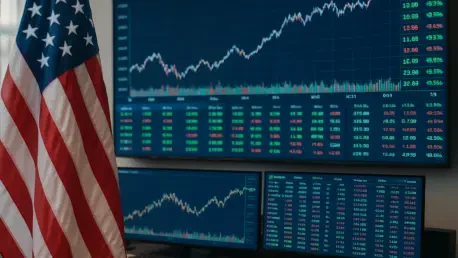As the financial world navigates a landscape of evolving economic policies and technological breakthroughs, a prominent voice from JPMorgan Private Bank has sparked renewed optimism among investors with a bold forecast for the U.S. stock market in 2026, predicting a robust rally that could extend into the coming years. Stephen Parker, co-head of global investment strategy at the institution, recently shared an upbeat perspective during a discussion on CNBC’s Squawk Box. This forecast builds on expectations of strong market performance in the near term, driven by a confluence of favorable conditions. Parker’s analysis paints a picture of an economy poised for growth, supported by structural improvements and innovative advancements. The anticipation of this rally has captured the attention of market participants, eager to understand the underlying factors that could propel equities to new heights. This insight offers a compelling glimpse into what might shape investment strategies in the near future, highlighting key drivers that could redefine market dynamics.
Beyond the immediate horizon, the strategist’s outlook emphasizes a series of economic tailwinds that are expected to sustain upward momentum. Central to this optimism is the role of Federal Reserve policies, which are anticipated to create easier financial conditions, alongside broader equity market trends that bolster investor confidence. Additionally, a significant legislative measure, dubbed the “One Big, Beautiful Bill,” is seen as a potential catalyst, injecting stimulus into the economy at a critical juncture. Perhaps most transformative is the surge in capital expenditure tied to artificial intelligence (AI), which Parker identifies as a game-changer for both corporate profitability and broader economic expansion. This wave of AI-driven investment is not merely a trend but a fundamental shift, positioning technology as a cornerstone of future growth. Together, these elements form a powerful combination, suggesting that the stock market could experience sustained gains, even amidst periodic fluctuations, as these supportive forces take hold over the next year or so.
Key Drivers Behind the Optimistic Forecast
Delving deeper into the specifics of this bullish prediction, corporate earnings emerge as a pivotal force expected to drive stock prices in 2026. Parker anticipates a third consecutive year of double-digit earnings growth for the S&P 500, a trend that could serve as the primary engine for market gains, even if valuation multiples experience slight contraction. Unlike speculative surges based on price-to-earnings expansions, this growth is rooted in tangible financial performance, offering a more stable foundation for investor optimism. The emphasis on earnings reflects a broader consensus among market strategists who prioritize fundamental indicators over short-term sentiment. While acknowledging the possibility of a temporary slowdown in the latter half of the current year, the strategist remains confident that the structural tailwinds—ranging from policy support to technological innovation—will reignite momentum. This balanced view captures both the challenges and opportunities ahead, providing a nuanced perspective on how the market might evolve in the near term.
Reflecting on the insights shared by Parker, it becomes evident that the groundwork for a stock market rally in 2026 has been carefully laid through a combination of policy measures, legislative support, and transformative investments in technology. The focus on AI as a driver of economic growth stands out as a defining factor, alongside sustained corporate earnings that bolster confidence in equity markets. Despite short-term uncertainties that have momentarily tempered enthusiasm, the overarching narrative points to a resilient and dynamic financial landscape. Looking ahead, investors are encouraged to consider strategic adjustments that align with these emerging trends, particularly in sectors poised to benefit from technological advancements. Monitoring the implementation of key legislative stimuli and Federal Reserve actions could also provide critical cues for navigating potential volatility. As the market trajectory unfolds, staying attuned to these developments offers a pathway to capitalize on the opportunities that have been so vividly forecasted.









